// canvas vars
var canvas=document.getElementById("canvas");
var ctx=canvas.getContext("2d");
var cw=canvas.width;
var ch=canvas.height;
// linear interpolation utility
var lerp=function(a,b,x){ return(a+x*(b-a)); };
// qCurve & line defs
var p1={x:125,y:200};
var p2={x:250,y:225};
var p3={x:275,y:100};
var a1={x:30,y:125};
var a2={x:300,y:175};
// calc the intersections
var points=calcQLintersects(p1,p2,p3,a1,a2);
// plot the curve, line & solution(s)
var textPoints='Intersections: ';
ctx.beginPath();
ctx.moveTo(p1.x,p1.y);
ctx.quadraticCurveTo(p2.x,p2.y,p3.x,p3.y);
ctx.moveTo(a1.x,a1.y);
ctx.lineTo(a2.x,a2.y);
ctx.stroke();
ctx.beginPath();
for(var i=0;i<points.length;i++){
var p=points[i];
ctx.moveTo(p.x,p.y);
ctx.arc(p.x,p.y,4,0,Math.PI*2);
ctx.closePath();
textPoints+=' ['+parseInt(p.x)+','+parseInt(p.y)+']';
}
ctx.font='14px verdana';
ctx.fillText(textPoints,10,20);
ctx.fillStyle='red';
ctx.fill();
///////////////////////////////////////////////////
function calcQLintersects(p1, p2, p3, a1, a2) {
var intersections=[];
// inverse line normal
var normal={
x: a1.y-a2.y,
y: a2.x-a1.x,
}
// Q-coefficients
var c2={
x: p1.x + p2.x*-2 + p3.x,
y: p1.y + p2.y*-2 + p3.y
}
var c1={
x: p1.x*-2 + p2.x*2,
y: p1.y*-2 + p2.y*2,
}
var c0={
x: p1.x,
y: p1.y
}
// Transform to line
var coefficient=a1.x*a2.y-a2.x*a1.y;
var a=normal.x*c2.x + normal.y*c2.y;
var b=(normal.x*c1.x + normal.y*c1.y)/a;
var c=(normal.x*c0.x + normal.y*c0.y + coefficient)/a;
// solve the roots
var roots=[];
d=b*b-4*c;
if(d>0){
var e=Math.sqrt(d);
roots.push((-b+Math.sqrt(d))/2);
roots.push((-b-Math.sqrt(d))/2);
}else if(d==0){
roots.push(-b/2);
}
// calc the solution points
for(var i=0;i<roots.length;i++){
var minX=Math.min(a1.x,a2.x);
var minY=Math.min(a1.y,a2.y);
var maxX=Math.max(a1.x,a2.x);
var maxY=Math.max(a1.y,a2.y);
var t = roots[i];
if (t>=0 && t<=1) {
// possible point -- pending bounds check
var point={
x:lerp(lerp(p1.x,p2.x,t),lerp(p2.x,p3.x,t),t),
y:lerp(lerp(p1.y,p2.y,t),lerp(p2.y,p3.y,t),t)
}
var x=point.x;
var y=point.y;
// bounds checks
if(a1.x==a2.x && y>=minY && y<=maxY){
// vertical line
intersections.push(point);
}else if(a1.y==a2.y && x>=minX && x<=maxX){
// horizontal line
intersections.push(point);
}else if(x>=minX && y>=minY && x<=maxX && y<=maxY){
// line passed bounds check
intersections.push(point);
}
}
}
return intersections;
}
body{ background-color: ivory; padding:10px; }
#canvas{border:1px solid red;}
<h4>Calculate intersections of QBez-Curve and Line</h4>
<canvas id="canvas" width=350 height=350></canvas>

